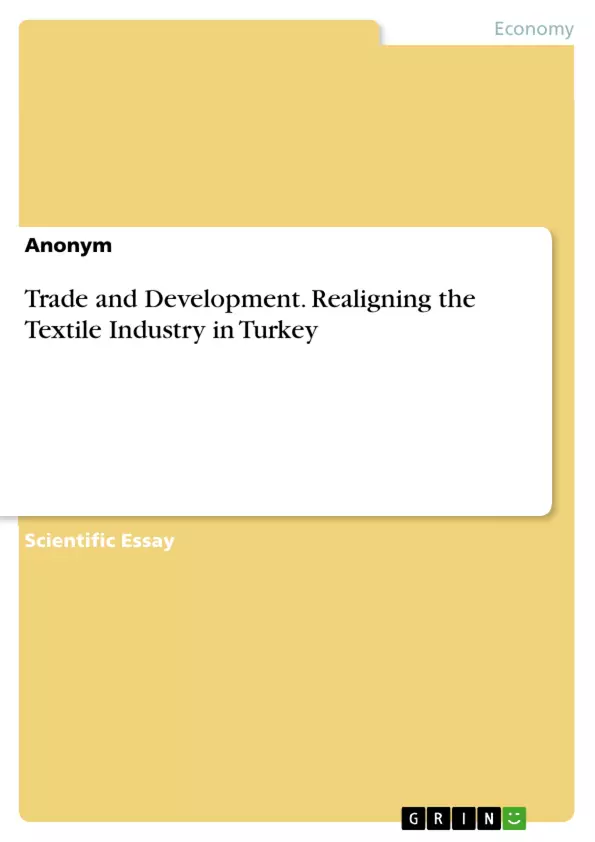The following paper is based on the WTO’s liberalisation efforts in the textiles industry. It specifically studies the case of Turkey. Resulting from the WTO’s liberalisation efforts, the Turkish textiles market is facing various challenges. The paper is therefore occupied with proposing and critically analysing potential trade instruments to successfully realign the Turkish textiles industry. The measures taken into consideration are 1) a devaluation of the Turkish currency, 2) an introduction of subsidies with a corresponding increase in money supply, 3) a lowering of taxes on general textile employment, 4) the forging or deepening of new bilateral or multilateral trade agreements, 5) a shift towards higher value-add production, and 6).
Inhaltsverzeichnis (Table of Contents)
- Introduction
- Inner state level of analysis
- Inter state level of analysis
- Global level of analysis
- Conclusion
Zielsetzung und Themenschwerpunkte (Objectives and Key Themes)
This paper aims to analyze the challenges facing the Turkish textiles industry in the wake of WTO liberalization efforts, specifically focusing on the impact of increased competition from low-cost producers in Asia. It proposes and critically evaluates potential trade instruments to help the industry realign and regain competitiveness.
- The impact of WTO liberalization on the Turkish textiles industry.
- Challenges faced by the Turkish textiles industry due to global competition.
- Potential trade instruments for realigning the Turkish textiles industry.
- The role of macroeconomic factors in the competitiveness of the Turkish textiles sector.
- Analysis of inner-state, inter-state, and global trade measures for boosting Turkish textiles exports.
Zusammenfassung der Kapitel (Chapter Summaries)
- Introduction: This chapter provides an overview of the liberalization efforts in the textiles and clothing sector, tracing the evolution of trade regulations from the GATT to the ATC. It highlights the challenges posed by these changes for developing countries like Turkey, particularly due to the rise of low-cost competitors in Asia.
- Inner state level of analysis: This chapter examines the potential benefits and drawbacks of devaluating the Turkish currency to boost exports. It discusses how a devaluation could affect the real exchange rate, leading to potential increases in Turkish textile exports.
Schlüsselwörter (Keywords)
The primary keywords and focus topics of this text include: Turkish textiles industry, WTO liberalization, trade instruments, competitiveness, global competition, low-cost producers, devaluation, subsidies, bilateral and multilateral trade agreements, value-add production, macroeconomic factors, demand and supply side measures.
- Arbeit zitieren
- Anonym (Autor:in), 2010, Trade and Development. Realigning the Textile Industry in Turkey, München, GRIN Verlag, https://www.grin.com/document/382042



